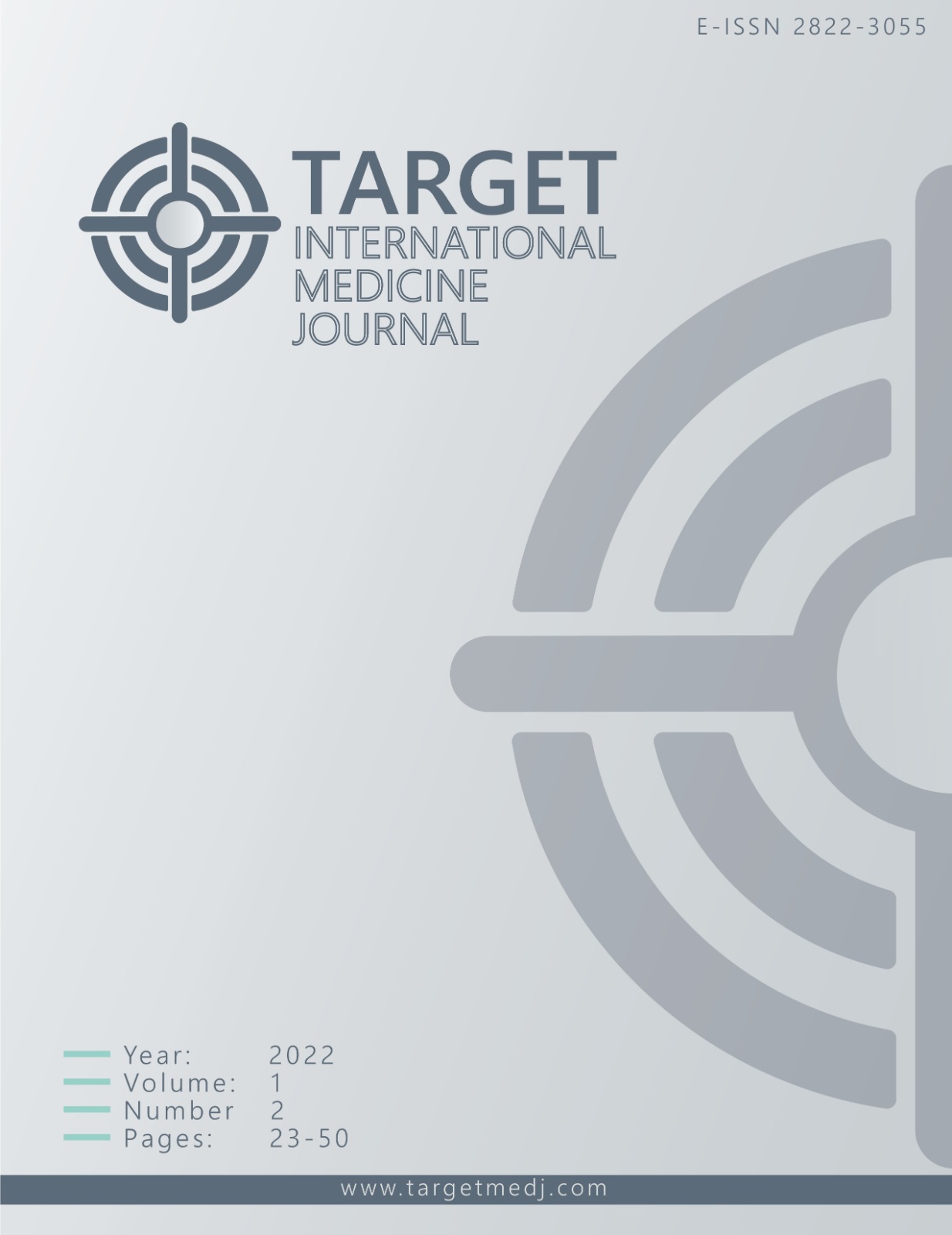Distribution of intestinal parasites in patients applied to Inonu University Turgut Ozal Medical Center Parasitology Laboratory between 2018-2022
Author :
Abstract
Keywords
Abstract
Aim: Diseases caused by intestinal parasites are an important public health problem in our country as well as in the world. In this study, it was aimed to determine the distribution of intestinal parasites in patients applied to İnönü University Turgut Özal Medical Center Parasitology Laboratory with various gastrointestinal system complaints and to show their association with variables such as gender and year.
Materials and Methods: Stool samples of 15610 patients sent to the Parasitology Laboratory between January 2018 and March 2022 were included in the study. Stool samples of the patients were analyzed first macroscopically and then microscopically by native-lugol methods. Cellophane tape method was used in 917 patients according to the complaints of rectal itching and growth retardation. Demographic data of the patients were obtained through the hospital and laboratory information operating system.
Results: Intestinal parasites were detected in 5.5% (861) of the 15610 patients analyzed. Of 15610 stool samples, 7232 (46.33%) belonged to female and 8378 (53.67%) to male patients. When the distribution of intestinal parasites detected by years is analyzed, the highest number of patients and positivity rate were in 2018 [4265 (28.92%) of 4526 samples were negative, and 261 (30.31%) were positive], and the lowest was in 2022 (679(4.60%) of 712 samples were negative, and 33 (3.83%) were positive). When the distribution of the positivity rate according to the parasites wasanalyzed, 221 (25.67%) Giardia intestinalis, 201 (23.35%) Blastocystis hominis, 157 (18.23%) Entamoeba histolytica / Entamoeba dispar, 179 (20.79%) Entamoeba coli, 57 (6.62%) Enterobious vermicularis, 19 (2.21%) Trichomonas hominis, 17 (1.97%) Iodeomoeba butschlii and 10 (1.16%) Taenia saginata were found.
Conclusion: Although the frequency of parasite infection in patients applied to the laboratory was found to be lower than in previous years, another reason for this is that people have started to pay more attention to hygiene conditions due to the coronavirus (COVID-19) epidemic in our country. Although there has been a statistical decrease despite the past years and it shows that intestinal parasite infections continue to be an important public health problem in our region, it is also important in terms of revealing the decrease in incidence.
Keywords
- 1. Pektaş B, Gökmen AA, İnci A,et al., Three years of distribution intestinal parasites in an Educational Research Hospital. Journal of clinical and experimental investigations. 2015;6:269-73.
- 2. Ataş AD. The distribution of pathogenic intestinal parasites in Sivas Cumhuriyet University Faculty of Medicine Research and Application Hospital between 2006-2018. T Parazitol Derg. 2020;44:25-30.
- 3. Öncel K. Distribution of Intestinal Parasites Detected in Şanlıurfa Mehmet Akif Inan Education and Research Hospital Between October 2015 and October 2016. T. Parazitol Derg 2018;42:20-7.
- 4. Ataş AD, Kuşçuoğlu S. Distribution of intestinal parasites detected in the tokat public health laboratory during the period from January 2007 ¬- December 2009. T Parazitol Derg. 2010;34:161-65.
- 5. Garcia IS. Diagnostic Medical Parasitology American Society for Microbiology. 2001.1752 Nstreet NW Washington, DC. 20036.
- 6. Polat E, Özdemir S, Sirekbasan S, The distribution of intestinal parasites in patients presenting to a university hospital in istanbul: a seven-year retrospective analysis. T Parazitol Derg. 2020;44:139-42.
- 7. Değerli S, Ozçelik S, Çeliksöz A, The distribution of intestinal parasites in patients presenting at the parasitology laboratory of the cumhuriyet university. T Parazitol Derg. 2005;29:116-9.
- 8. Baykan M, Aldemir OS, Baysal B, Gökçen A, Examination of parasite cases between Dec193 and 1998 at Konya Selçuk University Faculty of Medicine Hospital. T Parazitol Derg.
- 9. Orhan V. Distribution of intestinal parasites in patients admitted to Dokuz Eylül University Faculty of Medicine Hospital. T Parazitol Derg. 2002;26:423-25.
- 10. Ergene B, Uysal H, Sahip N, Öner YA. The results obtained from 15714 stool samples examined parasitologically between Dec 1997 and 2001 in the Parasitology department of Istanbul Faculty of Medicine. T Parazitol Derg.
- 12. Taşçı S, Zeyrek ÇD, Ozbilge H, et al. Distribution of intestinal parasites in patients admitted to the Microbiology Laboratory of the Faculty of Medicine of the University of Harran. T Parazitol Derg. 2002;26:278-81.
- 14. Yula E, Deveci Ö, İnci M, Tekin A. Intestinal parasites and report of etiological analysis in a state hospital. JClinic Exp Invest. 2011;2-74-9.
- 15. Düzyol D, Kilimcioğlu AA, Özyurt BC,et al. Incidence of Intestinal Parasites Detected in the Department of Parasitology in Celal Bayar University Hospital between 2006 and 2010. T Parazitol Derg. 2012;36:147-51.
- 16. Usluca S, İnceboz T, Over L,et al. The distribution of intestinal parasites detected in the Dokuz Eylül University Medical Faculty Hospital between 2005-2008. T Parazitol Derg. 2003;27:31-4.
- 17. Çulha G, Gülkan B. Distribution of intestinal parasites in patients presented at the Parasitology Laboratory of the Medical School of Mustafa Kemal University during the years 2006 and 2010. Turkey Hygiene Biol Journal.
- of the Ege University Medical School Hospital, in 2005. T
- Parazitol Derg. 2007;31:133-5
- 21. Karaman Ü, Çalık S, Geçit İ, et al. Evaluation of the incidence of intestinal parasites in patients admitted to the state hospital with complaints of the digestive system. Firat Health Services Derg. 2010;5:143-51.
